Astereae
The Aster Tribe
Aster means star. The Astereae form a large tribe of flowers common throughout the southwest. Many rather weedy species are asters. Asters typically have numerous ray and disk flowers. Leaves are usually alternate. The pappus is usually composed of bristles. Phyllaries are in several unequal series. Cryptic characters include anthers with blunt bases, epaleae receptacles, and flattened stigmas with marginal rows of papillae.
| Acamptopappus | sphaeroephalus |
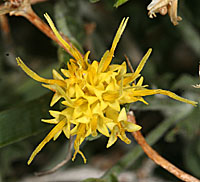 |
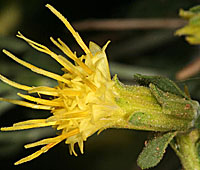 |
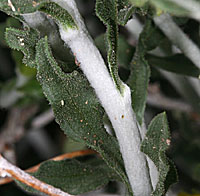 |
| Most asters have both ray and disk flowers but Acamptopappus above has only disk flowers. Acamptopappus means stiff pappus and sphaerocephalus means rounded head. This specimen was growing on windy, sunny west facing bluffs at 10,400 feet at Cedar Breaks National Monument, Utah. | ||||
| Aster | porterii Porter' Aster |
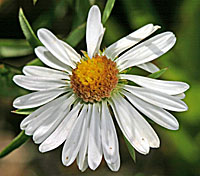 |
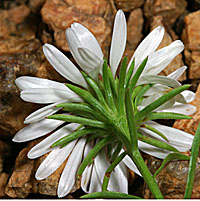 |
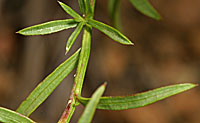 |
| Most of the old Aster genus have moved to Symphyotrichum, Greek symphyos, (growing together) and thrix (hair), referring to the hair-like flowers sim-fy-oh-TRY-kum. This aster is still called Aster in some texts. Numerous white rays and yellow disc flowers are very typical of the Astereae. | ||||
| baccharis | salicina False Desert Willow |
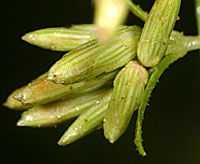 |
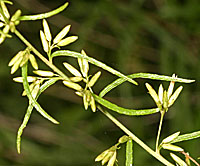 |
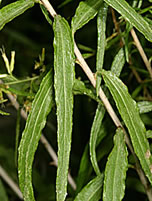 |
Sure looks like a willow, Saliceae, but is really an Asteraceae. Unusual in having only disc flowers. Long willow like leaves. Grows in western washes at moderate elevations. The specimen here was growing at the base of a nearly dry waterfall in No Thoroughfare Canyon in Colorado National Monument. |
||||
| Chrysothamnus or Ericamera | nauseosus Rubber Rabbitbrush |
 |
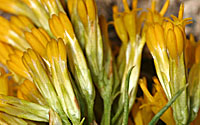 |
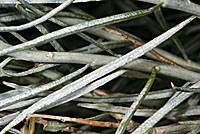 |
| Yellow flowers of shrubby rabbitbrush cover the roadsides in fall in the mountain west. Rabbitbrush are woody shrubs on the banks of desert arroyos and along roadside ditches throughout much of the southwest. A number of species occur, the most common being nauseosus. Only disc flowers are present. Chrysothamnus means "golden shrub". Ericamera is greek for heath like leaves. | ||||
| Erigeron | divergens Spreading Erigeron |
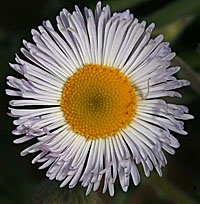 |
 |
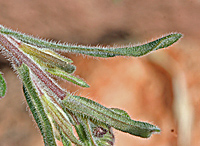 |
| Erigerons have numerous ray flowers. Over 100 rays are not uncommon. They are often found on roadsides and in meadows over a wide altitude range. Specimens here were observed in Grand Canyon, Arizona and in the Jemez mountains West of Santa Fe, New Mexico. | ||||
| Grindelia | squarrosa Curleycup Gumweed
|
 |
 |
 |
| Grindellia's are the sitcky gumweeds. The flower sides are covered with a sticky resin. Gumweeds are common in disturbed ground by roadsides and parking lots. Specimens like this are observed in parking lots in Buena Vista, Colorado and throughout New Mexico. | ||||
Gutierrezia |
sarothrae Snakeweed |
 |
 |
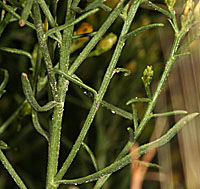 |
| Snakeweeds are low shrubs with fairly small yellow flowers. They do indeed grow where one might expect to find snakes. Found in open, sunny slopes in many areas of the west. | ||||
| Heterotheca | villosa Hairy Golden Aster |
 |
 |
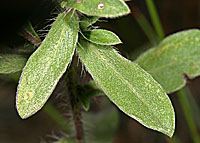 |
| Hairy Golden Aster is an extremely common rather weedy species found along arroyos, roadsides, and parking lots throughout the southwest. It likes rather scruffy areas near roadside where the ground is rocky and disturbed. | ||||
| Leucanthum | vulgare Ox Eye Daisy |
 |
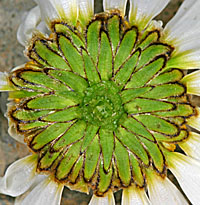 |
 |
| Oxy Eye Daisy grows around stockyards and in waste ground. It is a rather rough plant. The species here was found near Rampart Reservoir near Colorado Springs, Colorado. | ||||
| Macheranthera | canescens |  |
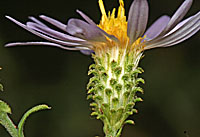 |
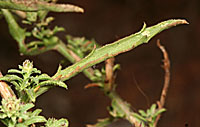 |
| Machaeranthera are rather weedy plants with purple ray and yellow disc flowers. A number of species are found in disturbed ground, along roadsides, and adajacent to fence rows at 4,000 to 10,000 foot elevations. Machaeranthera means "sword anther". | ||||
| Monoptillon | bellioides Desert Star |
 |
 |
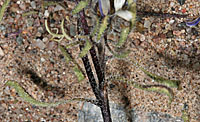 |
| Desert Star grows in sandy or gravel soils in Eastern California deserts. The species above was photographed in Mud Canyon in Death Valley, California in March, 2007. | ||||
| Pyrrocoma | crocea Curley Goldenweed |
 |
 |
 |
| Curley Goldenweed grows in subalpine meadows. This specimen was photographed in meadows at 9,500 feet near Gothic, Colorado. | ||||
| Solidago | multiradiata |  |
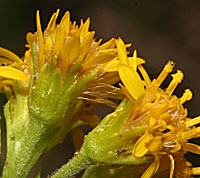 |
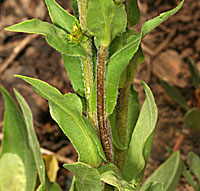 |
| The Genus Solidago emcompasses the Goldenrods. Goldenrods have inflorescences of many small yellow flowers. They grow in meadows at many elevations. | ||||
| Symphyotrichum | pansum Prairie Aster |
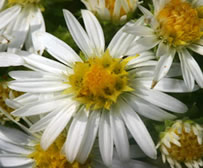 |
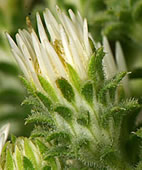 |
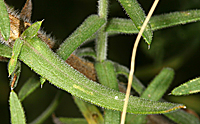 |
| The Genus Symphyotrichum includes many asters with typically white rays and yellow disc flowers. | ||||
| Tonestus | lyalii Alpine Goldenweed |
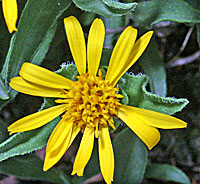 |
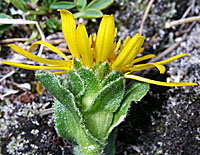 |
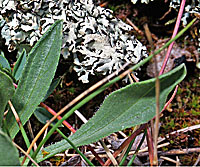 |
| Alpine Goldenweed grows at subalpine elevations. The above specimen was growing in meadows along the Continental Divide Trail north of Pagosa Springs, Colorado. | ||||
| Xylorhiza | venusta Woody Aster |
 |
 |
 |
| Xylorhiza means woody root. The specimen here was growing along the south Bright Angel Trail in Grand Canyon, Arizona. | ||||